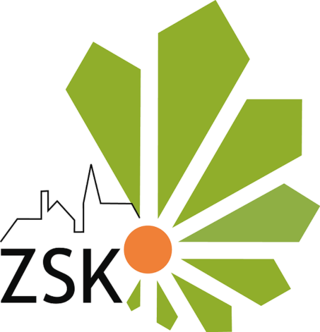ZSK
CENTRE OF URBAN ECOLOGY AND CLIMATE ADAPTATION

SP12: Animal Aided Design III - Monitoring und Evaluation
Against the background of climate change, cities are also becoming increasingly important for the protection of animal species. For the city of Zurich, for example, 40 of the 90 total mammal species living in Switzerland have been identified, i.e. almost half of all species. In addition to mammals, many other animal species also find suitable living conditions in the city, such as bird and wild bee species. In almost every animal group there are species that can also live in the city. The diversity of animal species can even exceed the diversity of the surrounding landscape if it is heavily farmed.
As climate change threatens many animal species, this function of cities as refuges will become even more important in the future. In this context, redensification and classic building-only redevelopments are leading to a further decline in animal species in cities, as there is less and less unused space in the city. This trend is exacerbated by climate change. In order to allow animals to survive in the city, it will no longer be sufficient in the future to hope that animals will occur in green spaces that have been planned without taking animals into account.
Current open space planning has not yet been geared towards systematically enabling the occurrence of animals in cities. The planning method "Animal-Aided Design"®, in short AAD, allows the creation of suitable retreat spaces for animal species within the framework of climate change-oriented planning. Animal-Aided Design® is a method that was developed to be able to include the basic needs of animals in planning.
The aim of Animal-Aided Design® is to create a habitat for a viable population in the planning area or, in the case of animals with a larger radius of action, to ensure their integration into a population. In the previous project funded by the Bavarian State Ministry for the Environment and Consumer Protection (StMUV), examples were used to show theoretically how Animal-Aided Design® can be used for concrete planning tasks.
In the present project, practical examples will now be used to research how the method proves itself in planning practice and whether it shows the desired success. Two implementation partners were found: GEWOFAG Holding GmbH and the City of Ingolstadt. The partners' projects are in different stages of realisation. This makes it possible to test the application of AAD in different realisation phases within the framework of a 3-year project.
Methodology
Two implementation examples will be used to investigate how the method can prove itself in planning practice and whether the desired success can be achieved in the implementation of measures. With GEWOFAG Holding GmbH and the City of Ingolstadt, two implementation partners were found, whereby the projects are in different stages of realisation. This makes it possible to test the AAD application in different realisation phases within the framework of a 3-year project.
In the GEWOFAG redensification project in Munich, flats and a kindergarten are currently being built on a former green space between the existing buildings. The loss of green space usually means a loss of habitat for the animals living there. By applying the AAD method, green spaces and architecture are to be adapted so that they continue to provide habitats for the species concerned.
The city of Ingolstadt is planning to integrate the Danube more strongly as part of climate-friendly urban development in order to improve cultural offerings and recreation, but also fresh air corridors and green infrastructure (GI) as a whole. Within the framework of AAD, a method is being developed here for how the optimisation of functions for people can be combined with an improvement in habitat functions and continuity for animal species.
Results
More than 3000 animal species have been identified in the adjacent flora-fauna-habitat areas. However, since the data situation in the core area is poor and incomplete compared to the FFH areas, the citizen science project "IngolStadtNatur" is currently being developed to involve citizens in the recording of urban nature. Species for AAD measures are then selected from these species. A student project was also successfully carried out as part of the project in 2017. The results of this student project will be published in another brochure in the near future.
In the post-densification project, for example, species portraits were developed for the target species hedgehog, green woodpecker, house sparrow and little bat, and green planning as well as building construction and green roofs are to be adapted to these species. The research team accompanies the planning and construction process and continuously coordinates AAD measures with the architects and landscape architects. The status of the species is checked through regular species mapping. After completion, the occurrence of the species is evaluated to check whether the measures have had the desired success.
Video of the project
https://www.youtube.com/watch?v=ecl21-qBjBQ&feature=youtu.be
Partners
State association for the protection of birds (LBV) München
Information on the results and publications of the sub-project can be found here.
Project partners:
- University of Kassel
- GEWOFAG Holding GmbH
- Technical University of Munich
- State Capital München



